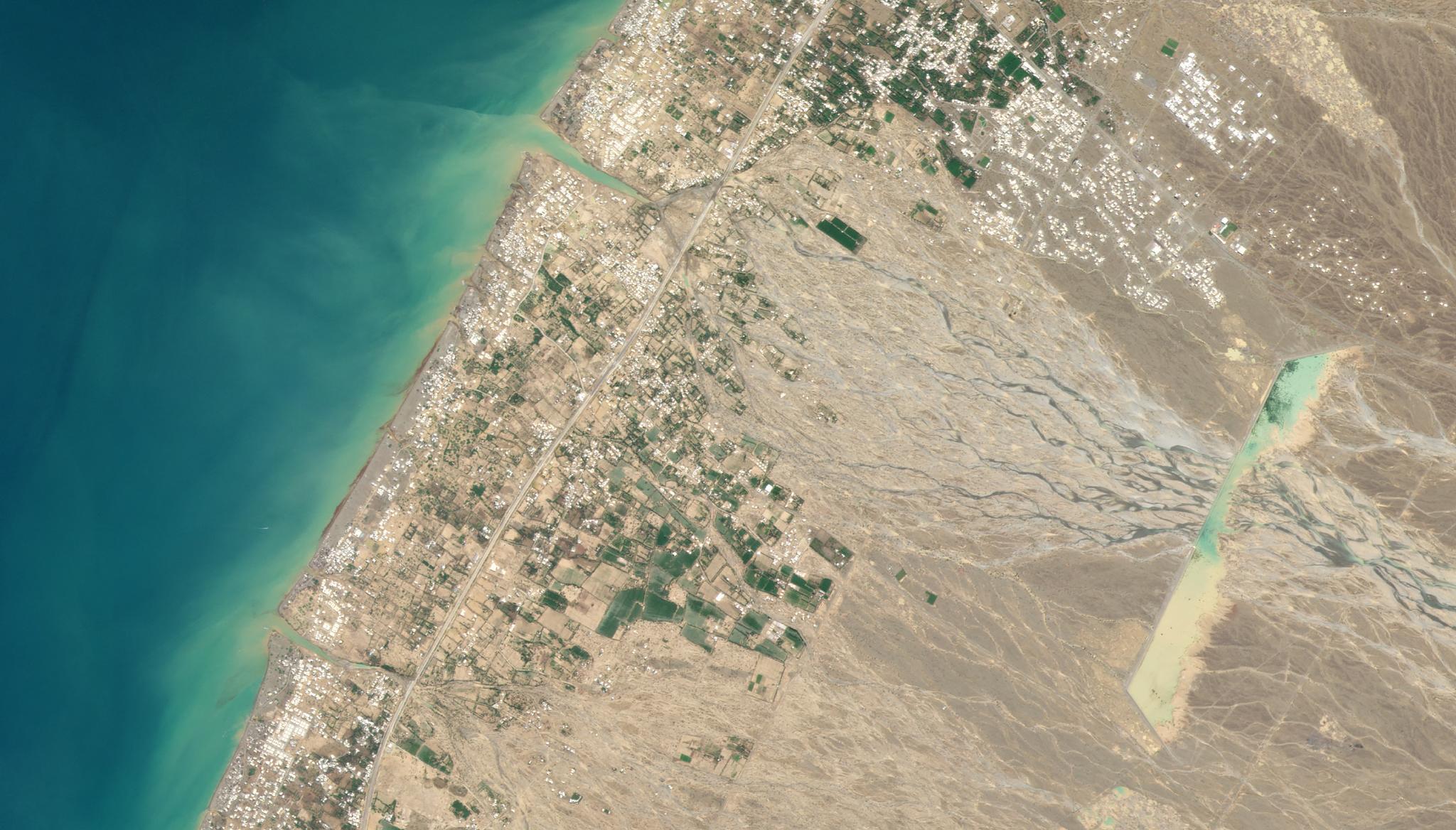PlanetScope Leveraged to Evaluate the Impact of Cyclones on Maritime Archeological Sites: An Evaluation of Using Big Data in Archaeology
Image above: Flood waters at Wadi al Hawasinah in Oman taken October 5, 2021. © 2021, Planet Labs PBC. All Rights Reserved. Historically, immense amounts of geospatial data have been used in the field of archaeological research to rapidly and remotely explore inaccessible archaeological sites. This Big Data helped generate robust archaeological databases of the remote areas of the Middle East and North Africa, in particular. Despite these records, changes in technology and an emphasis on anthropogenic threats to cultural heritage, combined with an acknowledgement that studies had limited data points from local perspectives, has led to shifting conversations in the field of archaeology of the Middle East and North Africa. Researchers from University College of London, Ulster University, and the University of Southampton offered an evaluation of these shifts through their contributions to the Maritime Endangered Archaeology in the Middle East and North Africa project (MarEA), which looks to design a baseline record of sites with data on spatial location, state of preservation, and vulnerability and build a system to engage local collaborators. Their publication demonstrated the potential of the MarEA dataset using Planet imagery of the impact of Cyclone Shaheen on the archeological site of Wadi al Hawasinah in Oman. The study monitored the site with PlanetScope false color infra-red imagery pre-cyclone and post-cyclone to evaluate the damage to the region and the impact of flooding on the site by extracting the data from the image in false color infra-red. This enabled the researchers to obtain timely and more detailed insights regarding the damage. The authors showcased how using such technologies with Big Data capabilities allow for more accurate readings of on-the ground change and an ability to synchronize such information with local perspectives. The full study can be found in the Journal of Field Archeology.

Ready to Get Started
Connect with a member of our Sales team. We'll help you find the right products and pricing for your needs.


